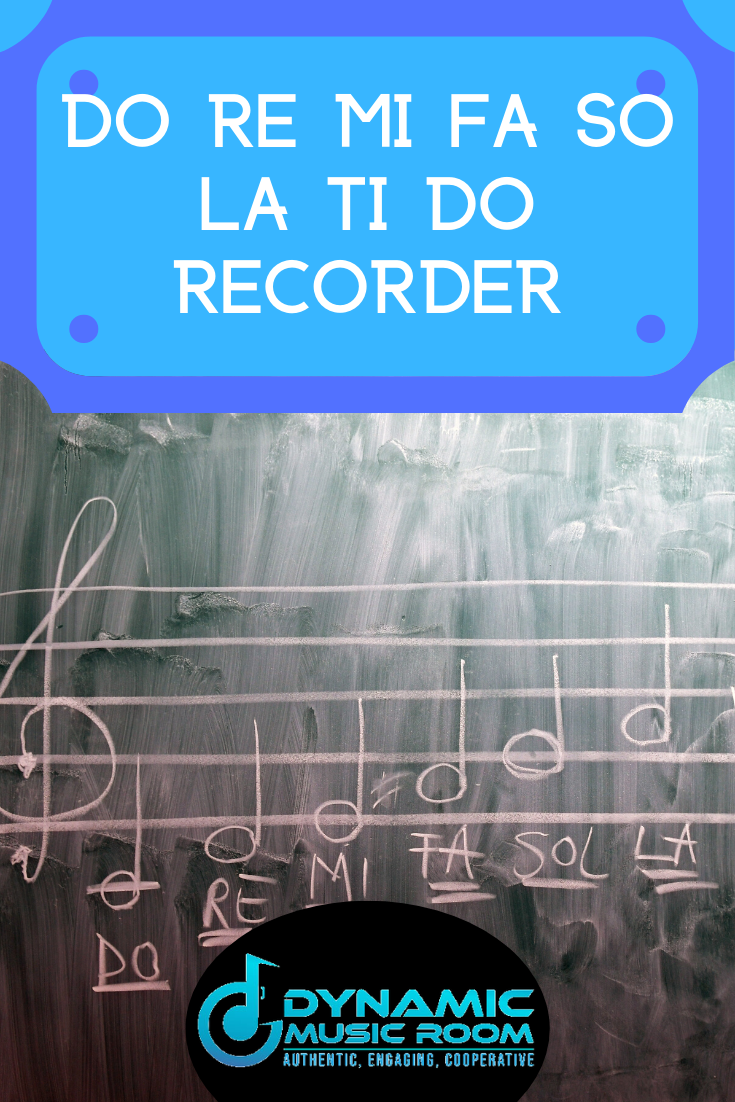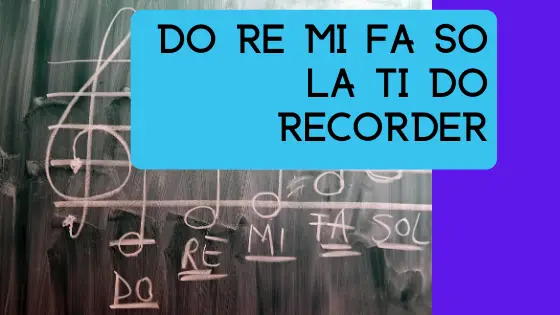Do you want to connect your solfege learning to that of recorder?
A lot of people and students remain confused on how the do re mi notes apply to recorders.
Even as a music teacher, I felt like I was failing to connect the two well for the longest.
So, as I normally do, I buckled down, did some research, asked around, and developed some tricks for teaching do re mi fa so la ti do recorder.
Do re mi on recorder really depends on the key you’re playing in. Fortunately, the most common keys students play are limited to G major, C major, and F major. With this in mind, it’s easy to build your solfege of the starting pitches.
Look ahead for a description of what the notes are in each key AND sample activities for connecting solfege to recorder playing.
Table of Contents
Do Re Mi Fa So La Ti Do Explained
These notes are also called solfege. In most systems, the pitches move to match the key you’re singing or playing in.
They help by training the ear to recognize pitch relationships in any key.
Most advanced musicians think/inner hear pitches using some version of solfege (often whether they realize it or not).
To figure out the solfege, start on starting pitch in a key.
For example, if we’re looking at D major, the starting pitch is D.
In this case, D = do.
Now we look at the rest of the pitches in the major scale and assign them the rest of the solfege syllables.
Sticking with D major, we end up with:
- D = do
- E = re
- F# = mi
- G = fa
- A = sol
- B = la
- C# = ti
- D = do
This can be applied to any major key (more on the common ones below).
For minor keys, most people will make the starting pitch begin on la and move the same steps.
For example, in the key of a minor:
- A = la
- B = ti
- C = do
- D = re
- E = mi
- F = fa
- G = sol
- A = la
Read more at our guide on how solfege works.
Do Re Mi Recorder – C Major
C major is the second most common key with newer recorder players, but I start with this one as it has no accidentals or altered pitches at all.
We use the same process to figure out each of the notes.
- C = do
- D = re
- E = mi
- F = fa
- G = so
- A = la
- B = ti
- C = do
Do Re Mi Recorder – G Major
This is the most common key for playing recorder with beginners.
It’s often used without the altered note F#, but it gets there as the player improves.
- G = do
- A = re
- B = mi
- C = fa
- D = so
- E = la
- F# = ti
- G = do
You may also want to check out Mary Had A Little Lamb solfege. It’s a simple recorder song with easy do re mi as well.
Do Re Mi Recorder – F Major
This key is the least common with beginners, but many advanced players end up learning in this key first.
With the note, B flat on recorder, you learn one of the fingering patterns which applies to many other accidentals.
- F = do
- G = re
- A = mi
- Bb = fa
- C = so
- D = la
- E = ti
- F = do
Bonus Tip: When playing in this key, you’ll need a great holding posture. Learn how to hold a recorder the right way.

4 Activities For Connecting Solfege With Recorder Playing
This section has a few of my favorite activities for connecting solfege to recorders just a little better. Feel free to do them and adapt them to meet your students’ needs
#1 Sing-Play-Sing-Play
Look at single patterns on recorders such as B-A-G.
Sing the pattern on do-re-mi and immediately switch to B-A-G after.
Alternate 3 times each.
This builds the connection through repetition.
At a higher level, I do this with simple songs as well, but the students alternate measures sing-play-sing-play.
#2 Lost In Translation
This is a cute little name for a simple but ear-strengthening task.
Pick a bunch of simple 4 beat patterns.
Sing the note letters and have students play them back to you.
Easy, right?
Now, the “language” changes, and you’ll sing the solfege with the same patterns as students echo them back to you by playing on the recorder.
Do this enough times making the patterns more and more complex. This builds fluency with the solfege on the recorder.
At advanced levels, just hum the patterns and expect the students to play them back to you.
Here are some really simple patterns to try at first:
- G-A-B-B
- B-A-G-G
- G–G-A-B
- B-B-A-G
- A-A-B-G
- A-B-A-G
- G-B-A-G
- B-A-G-B
- B-G-A-G
#3 Teach New Songs With Solfege First
If you choose some easier songs, learn to sing the song on solfege first before you start learning it on recorder.
I like to do a little challenge where I find two equally difficult songs.
One we make sure we learn first with solfege; the other we just dive into with a recorder.
We compare how long it takes to learn and the general quality of playing.
In every case, learning the solfege first results in faster learning and better playing.
The best songs to do this with are easy songs on the recorder (click the link to check out my 8 favorites with sheet music).
#4 Half And Half
Using any of the same activities from above or a song they’re learning to play, split the class in half.
Have half the class sign and sing in solfege while the other half plays.
Then switch.
When I have students do this, I’m amazed at how much better both sides play and the overall improvement in recorder skill with the song.
I do this one whenever I notice students are struggling with a song.
Final Thoughts
I hope you enjoyed learning some strategies to teach do re mi fa so la ti do recorder.
It’s important to connect solfege and recorder as it gives students a realistic way to apply their solfege learning.
We know how important it is to connect them, but it helps to see it used in a visibly practical way.
When I want more substantial sheet music to sing or play recorder on, I always check out Sheet Music Plus first.
They have a massive selection of sheet music for all types of instruments and levels (a lot of them are also instantly available online).
Click the button below to check out this great deal.

